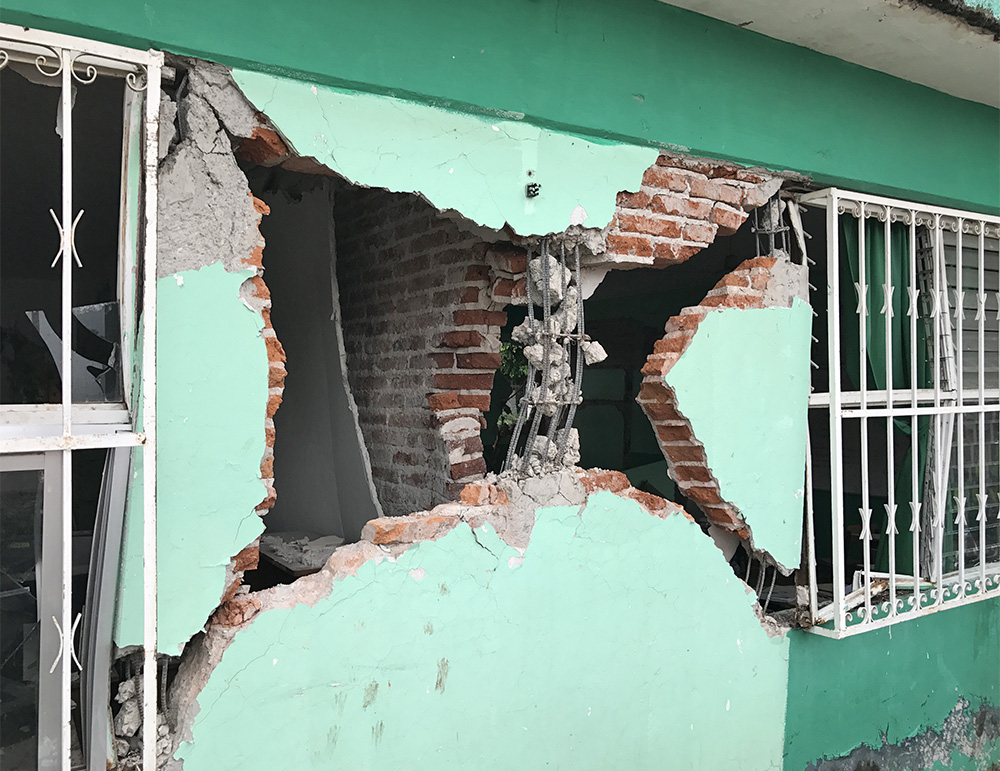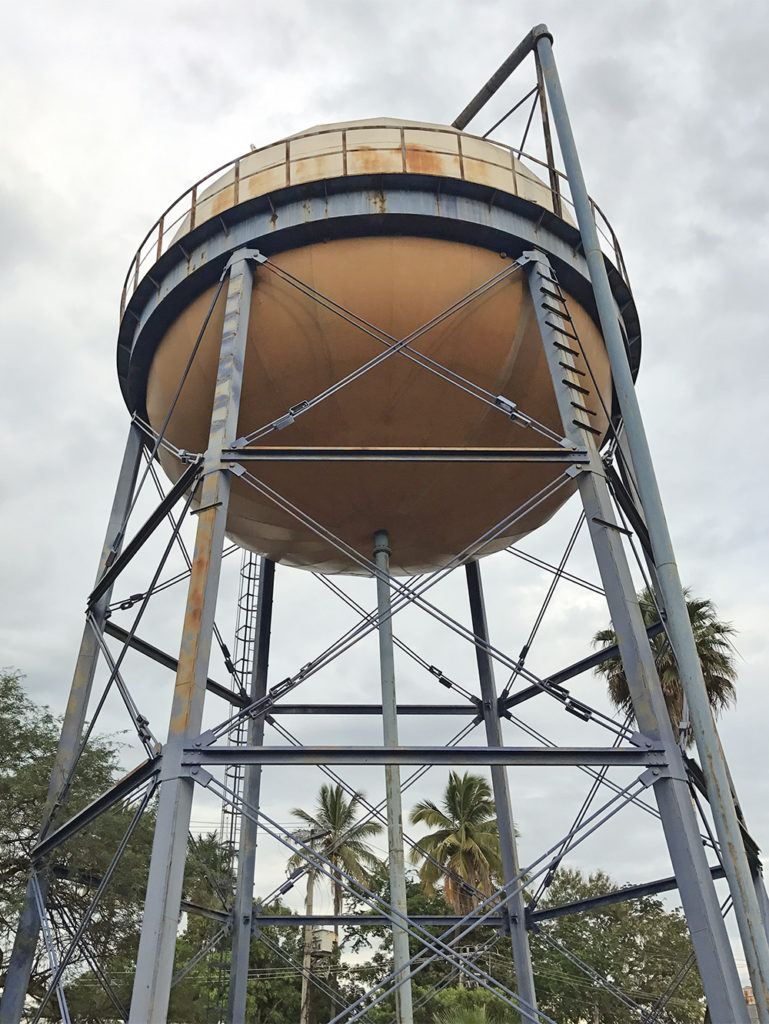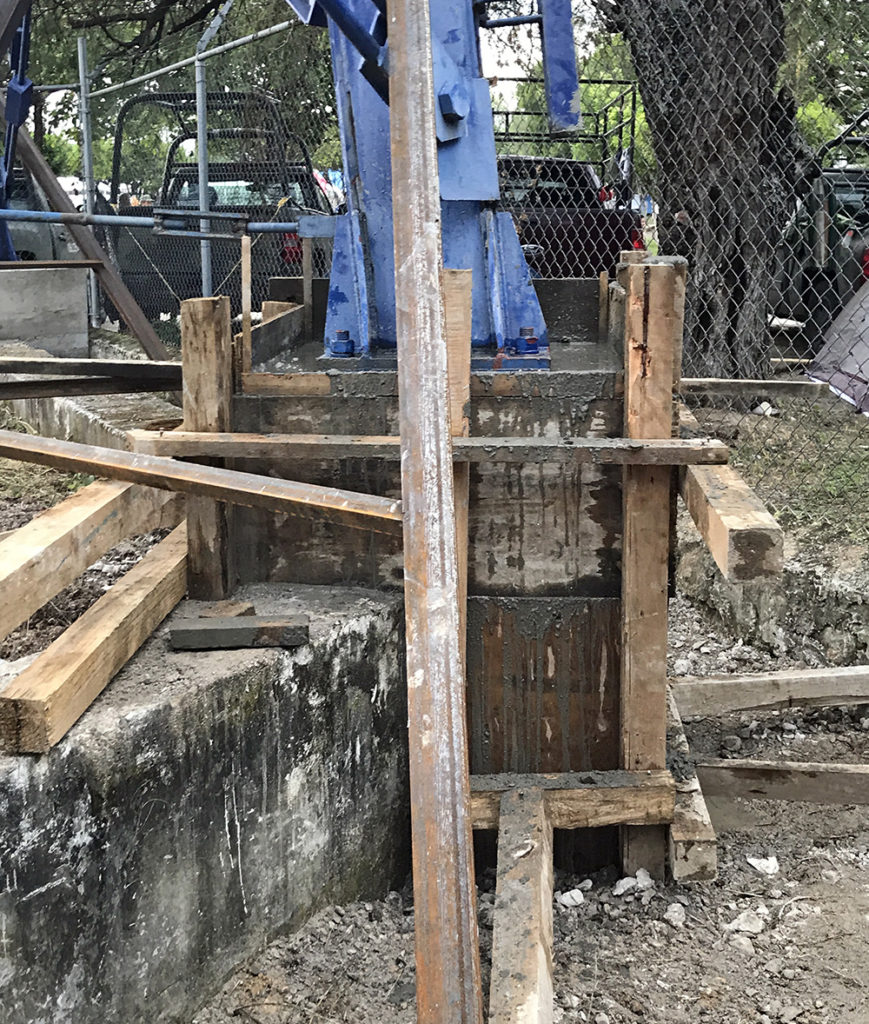From the first day Team 2 arrived in Mexico, one of the items on the itinerary was to do earthquake reconnaissance in some of the more rural Mexican towns that were closer to the earthquake epicenter than Mexico City. We heard conflicting stories from people about whether or not the towns near the epicenter received much damage from the earthquake. The soils in Mexico City are particularly poor, especially for certain types of mid-rise structures (6-12 stories), yet most of the land surrounding Mexico City consists of relatively strong and stiff volcanic soils. Conventional wisdom implies that this type of soil would not experience much permanent movement and, therefore, buildings in this area would not become damaged due to permanent soil movement. However, low-rise and stiffer buildings might be more affected by the stiff soils, in contrast with the soft soils in Mexico City which significantly affect mid-rise structures.
In the morning, we headed south out of Mexico City. In Cuernavaca, Morelos (about a 1.5 hour drive south of Mexico City), we stopped for lunch and purchased some beans, rice, and water bottles to donate to the recovery efforts in the hard-hit areas near the epicenter, along with the 200 toothbrushes and toothpastes we brought with us from Seattle. Little to no earthquake damage was apparent in the part of the city we observed so we did not conduct extensive earthquake reconnaissance in Cuernavaca.

Not knowing what to expect, we left Cuernavaca and ventured to Jojutla, Morelos. As it is the end of the rainy season, the mountains and countryside around Cuernavaca were beautiful and the landscape was lush and green. As we approached Jojutla, there was not much significant damage to the few outlying buildings. However, upon arriving in the central area of Jojutla, it became apparent that it had been heavily damaged. We were told by a resident that approximately 50% of the buildings in the town had been heavily damaged or collapsed in the earthquake. Three volunteers helping with the post-earthquake recovery, Arturo, Luis, and Mariana, were nice enough to lead us around the city and discuss the earthquake and its aftermath. Most of the buildings in Jojutla consist of one- and two-story masonry in-fill, adobe, or unreinforced masonry structures. All three of these structural systems are particularly vulnerable to earthquake damage.

We were told by the volunteers that there were five schools within the city. We observed one public pre-school, two public elementary schools, and one private high school. The public pre-school received some damage and was “yellow tagged” (meaning limited entry into the building is allowed, but permanent occupation is not allowed). One of the two public elementary schools received relatively little damage. The other elementary school was heavily damaged and appeared to possess little or no remaining lateral capacity. The private high school was also heavily damaged, is not occupiable, and will likely be demolished.

After observing the center of town, we headed to an elevated steel water tank located towards the edge of town that had received damage to its concrete foundation piers during the earthquake. The anchor bolts imbedded in these piers stretched slightly during the earthquake, causing the concrete on the piers to spall. The authorities drained the tank, removed the damaged foundation piers, and replaced them with new foundation piers. No damage to the upper steel portion of the tank was apparent by visual observation.

Our last stop for the day was the General Hospital Dr. Ernesto Meana San Roman. This facility consists of a two-story teaching wing built in 2011 and an older one-story main hospital wing built in 1988. The wing built in 2011 was damaged during the earthquake and was closed during our visit. However, the one-story older portion of the hospital received little structural damage and was operational. Immediately following the earthquake the hospital was fully evacuated, with medical services being provided from the grocery store parking lot across the street for five days until the decision was made to re-occupy the building. The hospital stated that its most significant challenge following the earthquake was that its on-site laundry room was damaged and staff have been unable to do laundry for two weeks. Clean laundry is essential to keeping the hospital sanitary.
The structural and nonstructural damage in central Jojutla was immense; however, the citizen volunteers we met there (who had organically travelled from other parts of Mexico) were driven to support the community and help the people recover. As in many cases, it is the community aspect of how people support each other after a disaster that seems to provide the most comfort and has the most immediate impact on allowing people to move forward.
Stay tuned for daily updates from our team… and if you have questions about our efforts, please comment below and we will respond with an answer.


